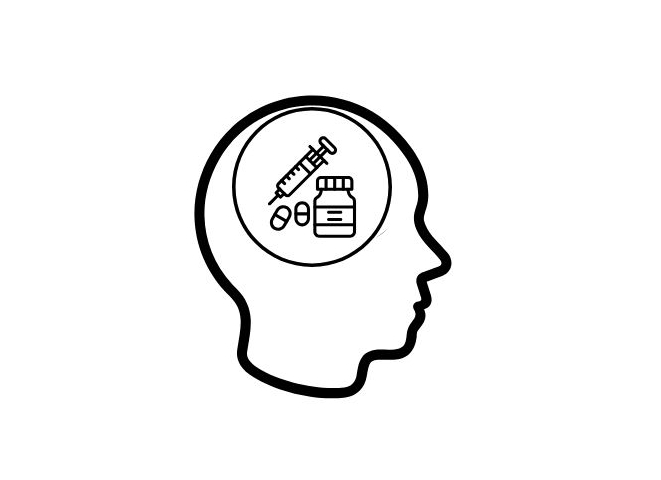Birth control is a form of contraceptive used for pregnancy prevention that stops fertilization and ovulation. Birth control comes in many different forms including birth control pills, shots, patches, intrauterine devices (IUD) and implants. Birth control is not always prescribed for pregnancy prevention, it can also be prescribed for irregular menstrual cycles, acne, cramps, endometriosis, and many other conditions.
The Birth Control Pill
The prescribed birth control pill for pregnancy prevention is taken everyday at the same time. The pill can be up to 99.9 percent effective if taken properly each day.
“These hormones basically make your body think it is pregnant, so it does not release an egg to be fertilized,” certified nurse midwife/advanced practice nurse Leslie Rubek said. “The hormones will also thicken the uterine lining, which will prevent a fertilized egg from implanting itself on the uterine wall as well as thicken cervical mucus.”
Although the pill is used for pregnancy prevention/protection, it does not protect the body from sexually transmitted diseases. According to Planned Parenthood, doubling up on sexual protection every time is best for pregnancy prevention.
When the birth control pill is used for pregnancy prevention it contains levels of both estrogen and progesterone. Estrogen and progestin are the two most essential hormones to the female body and are responsible for a variety of characteristics. Progestin is a form of progesterone that plays an important role in pregnancy and the menstrual cycle.
“These hormones vary depending on the patient’s complaints, weight and past medical history,” Rubek said.
The added hormone levels within the pill controls the hormones which will interfere and stop fertilization. The birth control pill also comes in different forms to be prescribed for acne control, menstrual cycles and many other conditions. According to Planned Parenthood, acne can be reduced and menstrual cycles can be regulated with combination pills that are prescribed containing both estrogen and progesterone.
The Shot
The Depo-Provera shot is a name brand for medroxyprogesterone acetate and is a long form type of birth control. It is injected every three months and is given by a certified nurse or doctor. The shot can be injected in the upper arm or buttox. According to Planned Parenthood, Depo-Provera is most effective when received every 12 to 13 weeks. The shot is also a progestin only contraceptive choice, as it does not contain any estrogen.
“This is typically given to patients that don’t want or can’t have the estrogen hormone, such as patients with a history of breast cancer or migraines,” Rubek said. “The injection is given every 3 months to prevent pregnancy as well as treat any menstruation problems caused by an imbalance in hormones.”
Depo-Provera contains only progestin, not including the added hormone estrogen that is in most other birth control methods. Birth control methods that contain only progestin have roughly the same effectiveness as methods with a combination of estrogen and progestin. Although, birth control containing added hormone levels may change the side effects that one may experience.
The Patch
The transdermal contraceptive patch is worn on specific parts of the body and is worn and changed out weekly. The patch releases the hormones through the skin to regulate the body’s natural hormone levels and prevent pregnancy. According to Planned Parenthood, in the United States, the only available brand of the birth control patch is Xulane.
IUD & Implant
The IUD, more commonly called an intrauterine contraceptive (IUC) is a small device made out of flexible plastic with a copper wire wrapped around. It is placed at the very top of the cervix at the fundus.
“A typical IUD insertion will happen in the office and a 4 to 6 week follow up check is recommended to make sure it is in place and the strings are seen,” Rubek said. “After the insertion, it is recommended to have a yearly check in the office as well as a monthly self check done by the patient to ensure strings are present.”
According to Planned Parenthood, the IUD has two different types that are FDA approved for the U.S. The first is copper, which goes by the brand of Paragard. The hormonal IUD, which includes Mirena, Kyleena, Liletta, and Skyla, can be kept and maintained in the cervix for as long as seven years depending on the brand.
Copper IUDs are nonhormonal, so the copper is used because it causes the sperm to swim away from the egg, preventing fertilization.
The Paragard IUD can last up to 12 years, but can be taken out at any given point. In the United States, there is one Federal Drug Administration approved copper IUD which is the brand Paragard.
Similar to the IUD, the implant or Nexplanon, is a tiny rod that is placed by a health care provider in the upper arm. The implant is a long-acting type of birth control and can last up to three years. According to Planned Parenthood, Nexplanon is one of the most effective birth control contraceptives because there is almost no way to mess it up.
As far as emergency contraception goes, according to Planned Parenthood, Paragard (copper IUD) can also be used as an emergency contraception if implanted five days prior to unprotected sex and it is the most effective way to prevent pregnancy after unprotected sex. It will not affect fertility and it is possible to get pregnant immediately after the implant is taken out.
Side Effects/Mental Health
Side effects caused by various forms of birth control vary from patient to patient and can last from two to three months. According to Planned Parenthood, while on any of the multiple forms of birth control various side effects may occur, but are relatively the same for the different types. Some side effects while on birth control include changes in sexual desire, irregular periods or no periods at all, anxiety, nausea and many others. Although, forms of birth control may lead to anxiety and depression in women who have not experiences depression or anxiety symptoms before. Women who take hormonal birth control are more likely to develop side effects of depression or anxiety if they are taking birth control containging estrogen. If any forms of side effects caused from birth control persits for more than two to three months it is suggested by Planned Parenthood to see a professional consultant because the sympoms may worsen. Although there is little evidence that birth control is an acutal cause for anxiety and depression it is an apparent side effect that is long lasting in women who take birth control.
According to Planned Parenthood, a more severe form of premenstrual syndrome (PMS) is premenstrual dysphoric disorder (PMDD) which can cause anxiety and other physical/mental health symptoms two weeks prior to a menstrual cycle. Women are often blamed for PMS, but PMDD can be very serious in some cases and shoul be taken seriously.
Effectiveness
The most effective form of birth control for pregnancy prevention starts with the Nexplanon implant and IUD. According to Planned Parenthood, fewer than 1 out of 100 people who use Nexplanon and the IUD as a birth control method will get pregnant each year. The implant is so effective because there is little to no chance for mistakes. With perfect use, the shot can be over 99 percent effective, but without proper timely dosages the shot is reduced to only about 94 percent effective. According to the Centers for Disease Control and Prevention (CDC), the pill is 99.7 percent effective when used perfectly. However, with typical use, its effectiveness goes down to 91 percent. Along with the pill, with human error the patch is about 91 percent effective; this means about 9 out of every 100 users will get pregnant each year. Birth control is a form of contraceptive used for pregnancy prevention that stops fertilization and ovulation. Birth control still does the same job when prescribed for taking action on acne or period control. Birth control comes in many different forms including birth control pills, shots (Depo Provera), patches, Intrauterine Devices (IUD) and implants. Birth control is not always prescribed for pregnancy prevention, it can also be prescribed for irregular menstrual cycles, acne, cramps, Endometriosis, and many other conditions.









